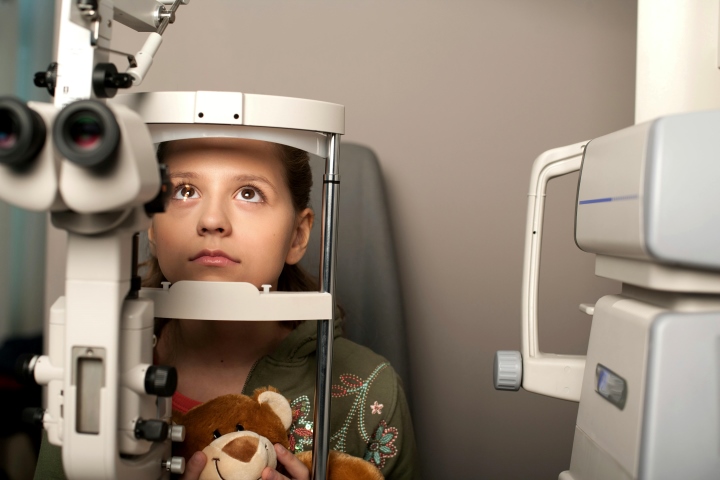Myopia is the most common refractive problem in the world. Estimates say that 22.9% of the world population is affected by myopia, wherein 2.7% suffer from high myopia. By 2050, this number may grow to 49.8% having myopia, with 9.8% having high myopia.
In This Article:
The Growing Threat of Pediatric Myopia
Strategies for Myopia Management
Worse, the recent trends in myopia rates reveal vulnerability among children. According to the American Academy of Pediatrics, myopia affects approximately 5% of preschoolers, 9% of school-aged children, and a staggering 30% of adolescents. These numbers are also on the rise. As the prevalence of myopia continues to grow, it thus becomes crucial for parents to take proactive steps in preserving and improving their children’s eye health.
The Growing Threat of Pediatric Myopia
The escalating rates of pediatric myopia represent a multifaceted crisis intertwined with various lifestyle factors. According to a 2022 study, diminished outdoor exposure, increased classroom hours, and prolonged close-focus activities such as reading and screen time present a four-fold risk for myopia among younger children. More specifically, myopia in close readers was around 7-fold more common among 7-year-olds than in the other age groups, likely because the natural reading distance is closer in young children.
Moreover, the advent of the digital age has exacerbated the issue. Children are now consistently exposed to screens at home and school, leading to digital eye strain and potential myopia development. These prove that pediatric myopia is an issue beyond genetics and is due to lifestyle changes. While unfortunate, it also serves as a ray of hope that, with quick acting, parents can easily apply different strategies to help preserve their children’s eye health.
Strategies for Myopia Management
Regular Eye Checkups
Early detection of vision issues is crucial, and routine eye exams can help identify myopia in its early stages. However, consistently managing myopia also requires regular eye checkups. Left untreated, myopia can lead to myopic macular degeneration, retinal detachment, and overall visual impairment. Additionally, the practice of myopia management is continuing to evolve. With regular eye exams, optometrists can prescribe the most appropriate corrective measures to prevent myopia from progressing. Retailers like LensCrafters even offer gamified children’s experiences using Roblox. This is meant to make the process of eye testing less scary for little kids while also teaching them better eye practices.
Appropriate Corrective Glasses
For most children, eye conditions can be treated with the right-fitting glasses. As such, getting fitted for and using the right prescription glasses can help kids improve their vision so it doesn’t progress to myopia. Having said that, it’s noted on Eyebuydirect that updated specs can correct myopia, too, as they manipulate light to focus light in the retina better. That said, your optometrist may also opt to prescribe a special type of spectacle lens to slow and control the progression of myopia. These are executive bifocals with near-focus power at the bottom and distance-focus power at the top. Apart from the prescription and the lens, you should also find glasses that suit your kids’ style. Today, there are diverse options like heart-shaped Amore frames and more classic clear Notting Hills. The decision will be based on your child’s specific needs and lifestyle.
Healthy Eye Habits
Spending time outdoors, especially in natural light, has been associated with a lower incidence of myopia onset and myopic shifts. In fact, daily outdoor time of 120 to 150 minutes at 5000 lux/minutes significantly reduced the incidence risk ratio by 15-24%. Thus, parents should ensure that their children have regular breaks from their devices. Otherwise, adhere to the 20-20-20 rule. For every 20 minutes spent looking at a screen, children should take a 20-second break and look at something 20 feet away. This practice helps relax the eye muscles and reduces the strain associated with prolonged screen use. If your children need reminding, apps like unGlue Kids offer scheduled prompts to help kids unplug as needed. Of course, you can also prevent myopia with an eye-healthy diet. Consuming foods like carrots, nuts, and leafy greens can strengthen corneal health and prevent oxidative stress.
With myopia rates on the rise among children, proactive measures are essential for preserving and improving their eye health. The collaboration between parents and optometrists is crucial in identifying the most effective solutions for each child, ensuring a clearer and healthier vision for the future.
Sources:
https://www.ncbi.nlm.nih.gov/pmc/articles/PMC6170055/
https://journals.plos.org/plosone/article?id=10.1371/journal.pone.0240750
